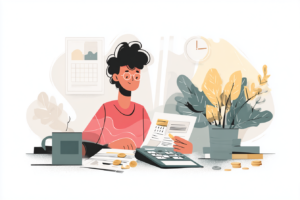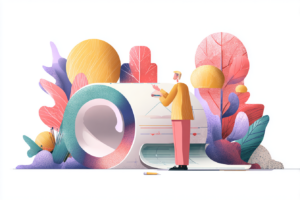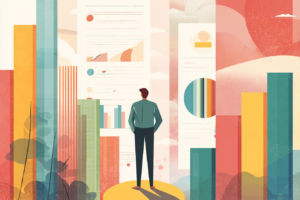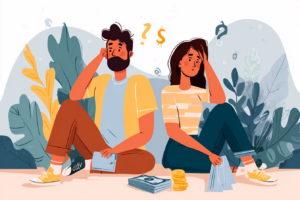Investing in art and collectibles represents a fascinating, though complex, frontier for investors looking to diversify their portfolios beyond traditional stocks and bonds. This form of investment involves acquiring valuable items—from paintings and sculptures to vintage cars and rare stamps—with the expectation that their value will increase over time, providing a profitable return.
Below, we will explore the nuances of investing in art and collectibles, outlining the benefits, risks, and strategies for those considering this alternative investment path.
Understanding the Appeal
The allure of art and collectibles is multifaceted. Not only do these items offer aesthetic pleasure and cultural significance, but they also have the potential to appreciate in value. Unlike stocks or real estate, art and collectibles carry intrinsic value, often independent of market cycles. They offer a hedge against inflation and can perform well when traditional markets are volatile.
Diversification Benefits
One of the primary advantages of investing in art and collectibles is portfolio diversification. Because the value of these items typically doesn’t correlate directly with traditional financial markets, they can provide balance to an investment portfolio, potentially reducing risk and smoothing out returns over time.
Emotional and Cultural Value
Beyond financial returns, art and collectibles offer emotional rewards. Ownership of a rare or beautiful item can often offer personal satisfaction and a sense of pride. Additionally, collectors often become part of a community with shared interests, further enriching the experience.
Assessing the Risks
However, the world of art and collectibles is not without its challenges. The market can be opaque, with less price transparency and more information asymmetry than in traditional markets. This opacity can make valuing items difficult, requiring expertise or professional advice.
Market Volatility and Liquidity Concerns
While certain segments of the art and collectibles market have shown robust growth, prices can be volatile influenced by trends, collector interests, and economic conditions. Additionally, art and collectibles are typically less liquid than stocks or bonds, potentially making it difficult to sell items quickly without compromising on price.
Strategies for Investment

Here are a few important strategies to consider when beginning your art investment portfolio.
Start with Passion
Successful collectors often start with a passion for the items they collect. This passion can drive the necessary research and networking to make informed decisions. It also ensures that, regardless of the investment outcome, the collector derives enjoyment from the process.
Research and Education
A solid understanding of the art or collectibles market is crucial. This involves studying the history and significance of items, understanding factors that influence their value, and keeping abreast of market trends. Attending auctions, and exhibitions and speaking with experts can provide invaluable insights.
Focus on Quality and Rarity
Generally, items of the highest quality and rarity within their category are more likely to appreciate. Condition, historical significance, and provenance (the item’s history of ownership) are key factors influencing an item’s long-term value.
Diversify Within the Category
Like traditional investments, diversification within your art or collectibles portfolio can help manage risk. Depending on your interests and budget, this might mean collecting across different genres, periods, or types of items.
Consider Provenance and Authenticity
The history and authenticity of an item are critical to its value. Investing in due diligence—such as provenance research, authenticity verification, and condition reports—can help protect your investment.
The Role of Advisors and Auction Houses
Navigating the art and collectibles market often requires assistance from professionals. Art advisors, auction houses, and specialists can provide valuable acquisition guidance, ensuring that investors make informed purchases. They can also assist with sales, helping to find buyers and achieve the best possible prices.
Tax Considerations and Estate Planning
Art and collectibles are subject to unique tax considerations, including capital gains taxes on profits from sales. Additionally, how these assets are handled in estate planning can have significant implications for heirs. Consulting with tax advisors and estate planners with experience with these types of assets is essential.
The Digital Frontier: NFTs and Digital Collectibles
The rise of digital art and collectibles, particularly non-fungible tokens (NFTs), continues to introduce a new dimension to the market. These digital assets offer proof of ownership and authenticity for digital items, from artwork to digital experiences.
While the market is still evolving, NFTs represent a convergence of art, technology, and investment, appealing to a new generation of collectors.
Conclusion
Investing in art and collectibles offers a unique blend of emotional and financial rewards. However, success in this market requires a mix of passion, knowledge, and strategy. Investors can navigate this complex landscape by understanding the benefits and risks, engaging with the community, and leveraging professional advice.
Whether you’re drawn to the timeless appeal of fine art or the cutting-edge world of digital collectibles, the art and collectibles market offers diverse opportunities for enriching your portfolio—and your life.
You might also be interested in: Interested In Investing In Precious Metals That Aren’t Gold? Consider These 9 Options







